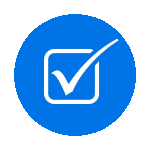Chapter 01. Introduction to Internal Auditing
Introduction

This chapter introduces the fundamental concepts and historical development of internal auditing. It provides a comprehensive overview, starting with the early stages of internal auditing, its evolution through regulatory changes, and the expansion of its scope beyond financial auditing to include operational aspects. The influence of technology and the globalization of auditing standards are also discussed, highlighting the profession’s adaptability and response to global business demands. It further details the role and scope of internal auditing within organizations today. It explains the dual functions of compliance and consultation that internal auditors perform, differentiates between internal and external auditing, and emphasizes the significance of internal auditing in organizational success. The importance of ethics and independence in conducting audits is underscored, setting clear expectations for the profession.
The chapter addresses future directions in internal auditing, including the impact of emerging technologies, the rise of data analytics, and adopting agile and continuous auditing methodologies. These discussions prepare readers for the evolving landscape of internal auditing, emphasizing the need for auditors to stay informed about technological advancements and changes in the business environment. The chapter concludes by offering guidance on building a career in internal auditing. It covers educational pathways, professional certifications, and the development of skills and competencies necessary for success in the field. The segment on career development emphasizes the value of continuous learning and professional growth, reflecting the dynamic nature of the internal auditing profession.
 Learning Objectives
Learning Objectives
By the end of this chapter, you should be able to
- Define internal auditing and explain the core components of the definition.
- Trace the historical development of internal auditing and understand its evolution through regulatory, commercial, financial, and global changes.
- Define the role and scope of internal auditing, including its compliance and consultative functions.
- Explain the significance of governance, risk, and control in the practice of internal auditing and organizational success.
- Identify future internal auditing trends, including technological advancements and agile methodologies.
- Outline the pathways for building a career in internal auditing, emphasizing education, certification, relevant skills, and professional growth.

